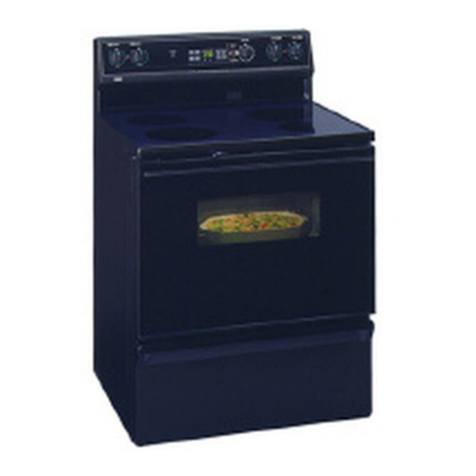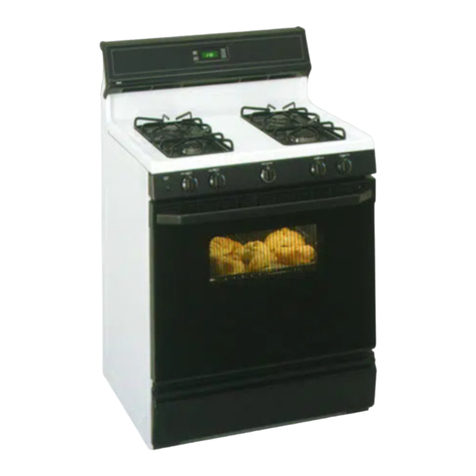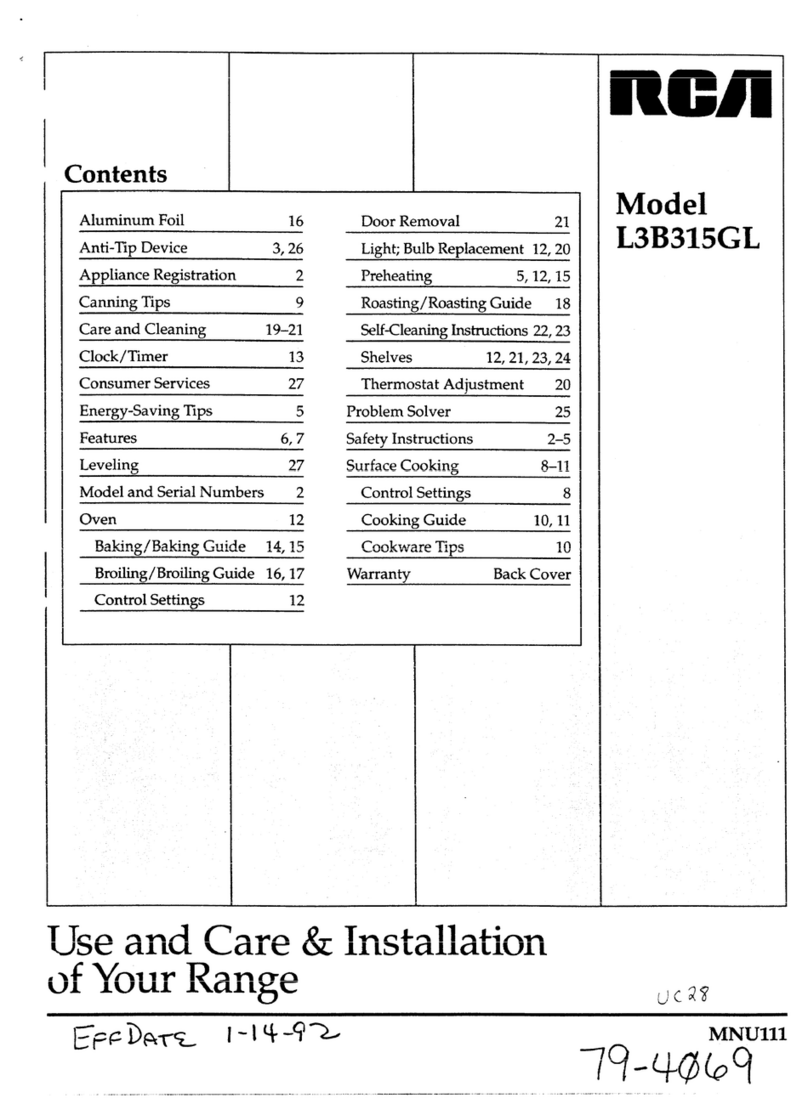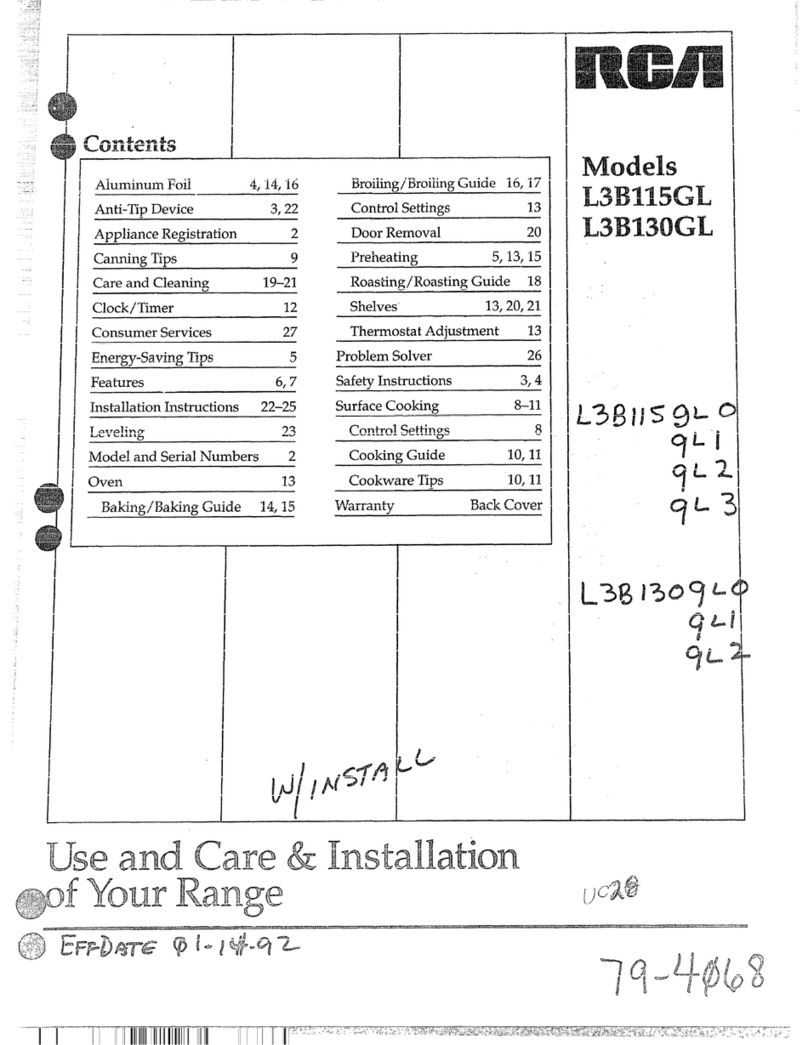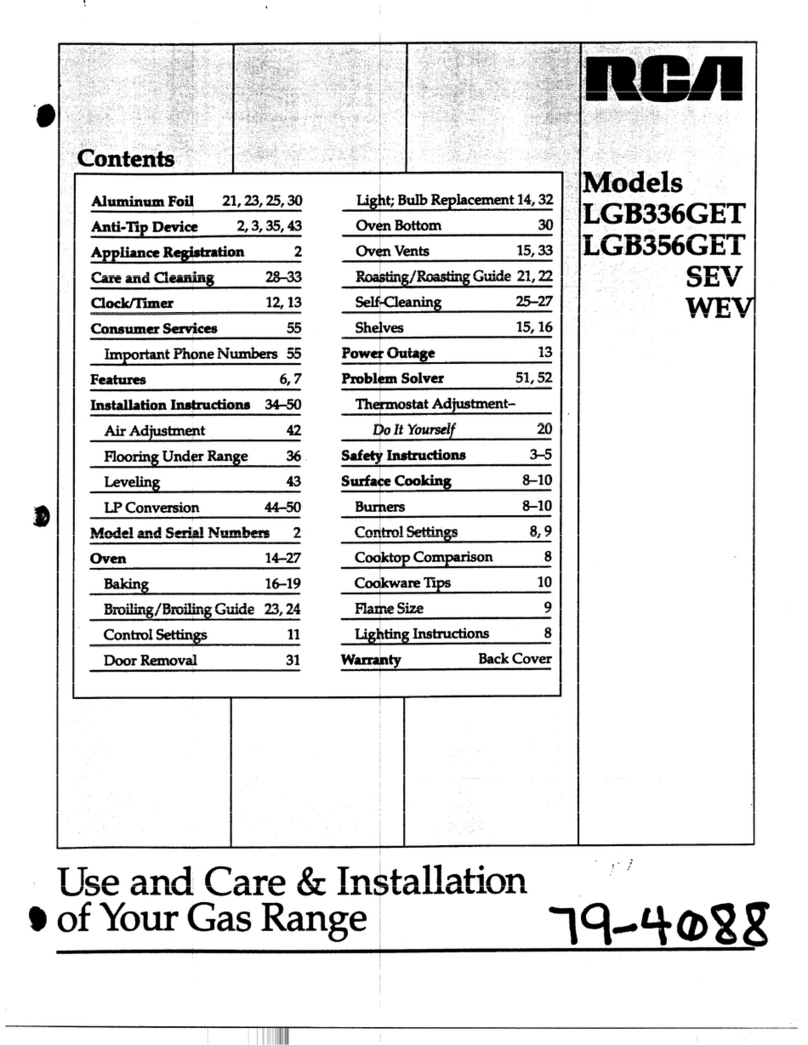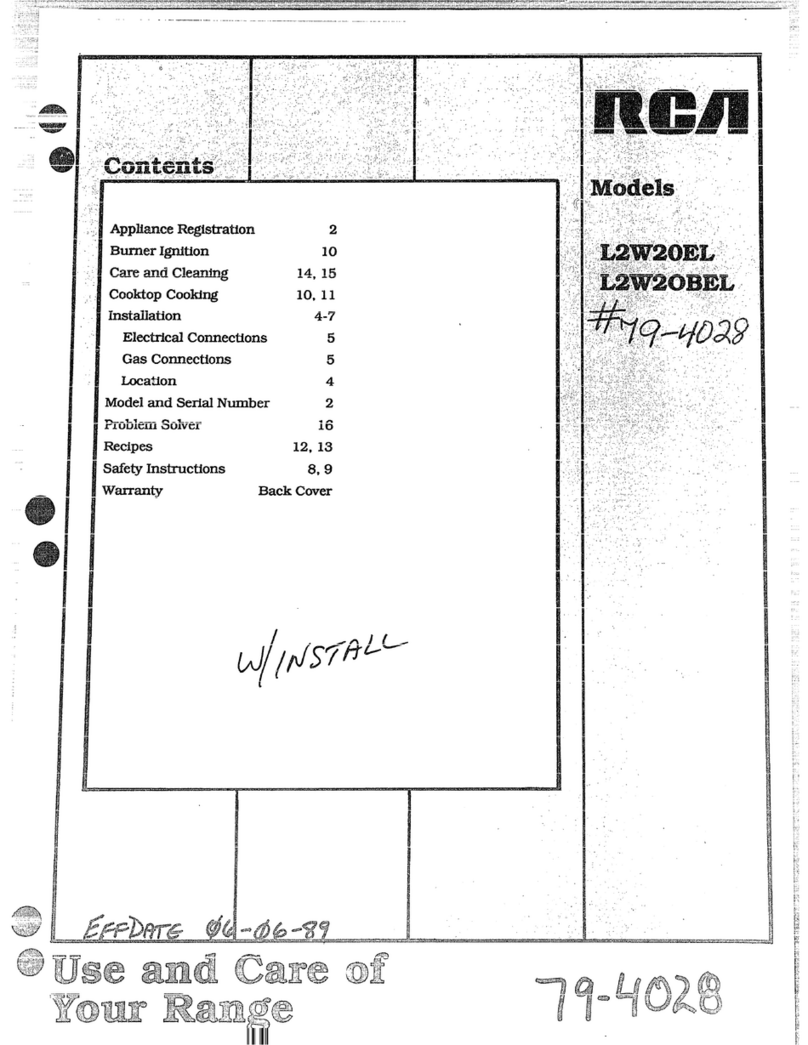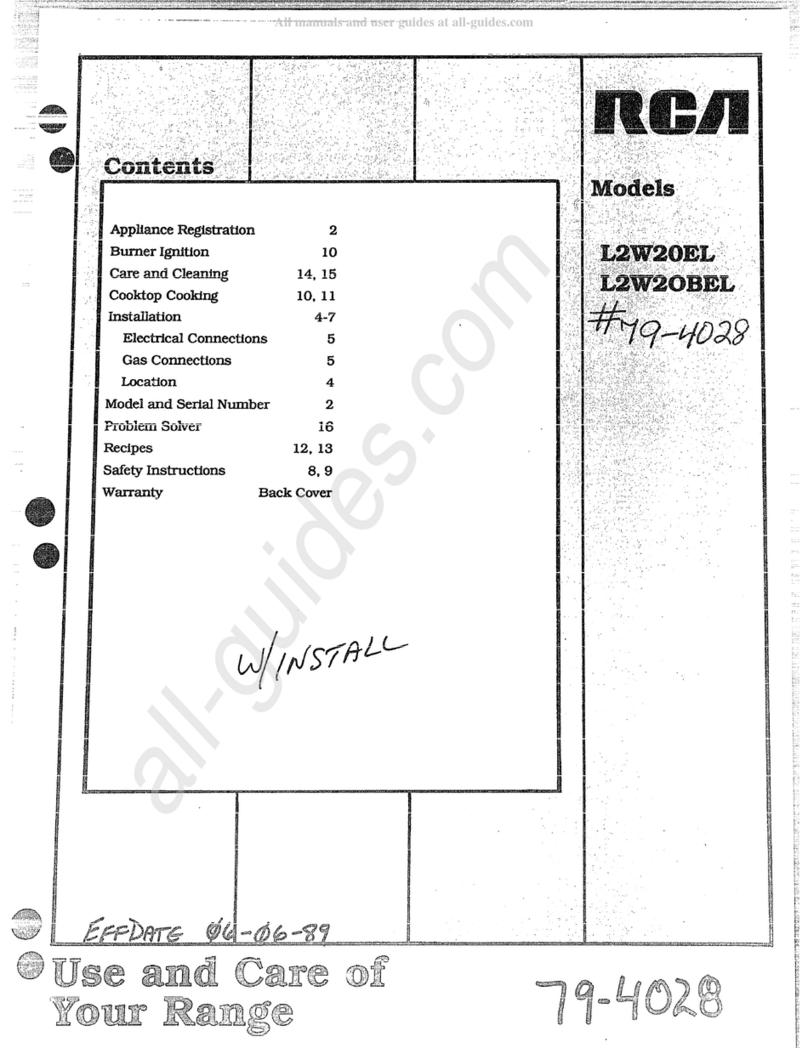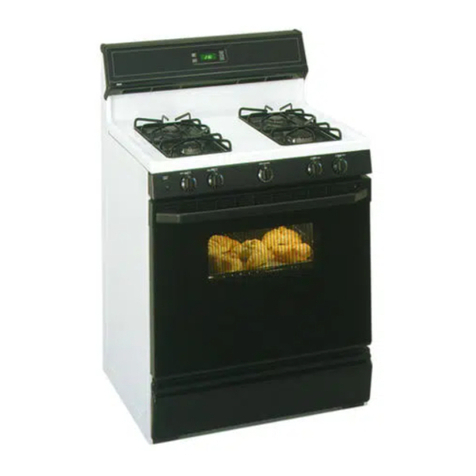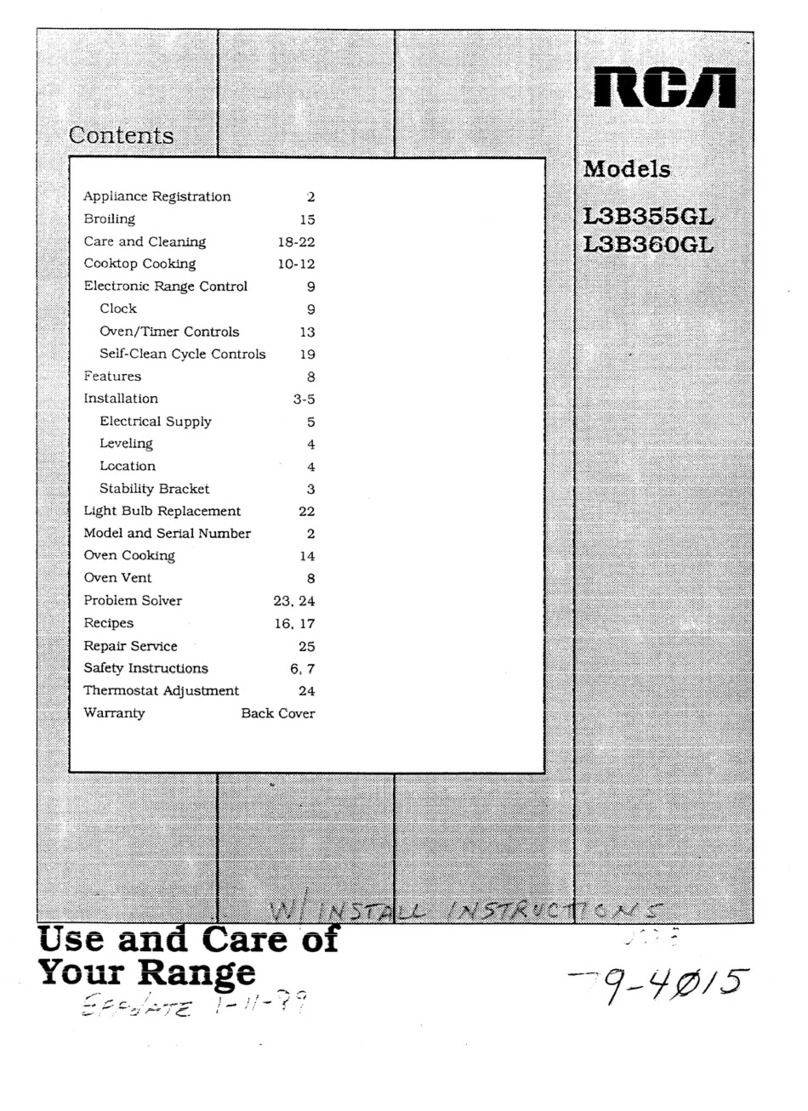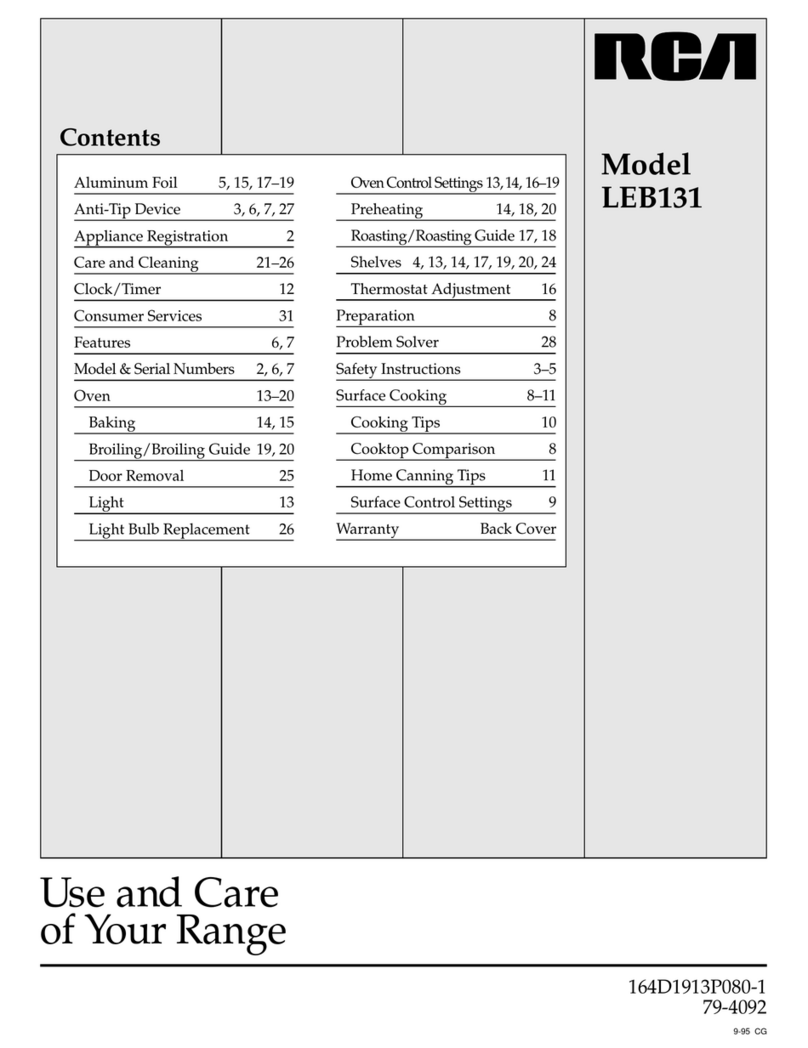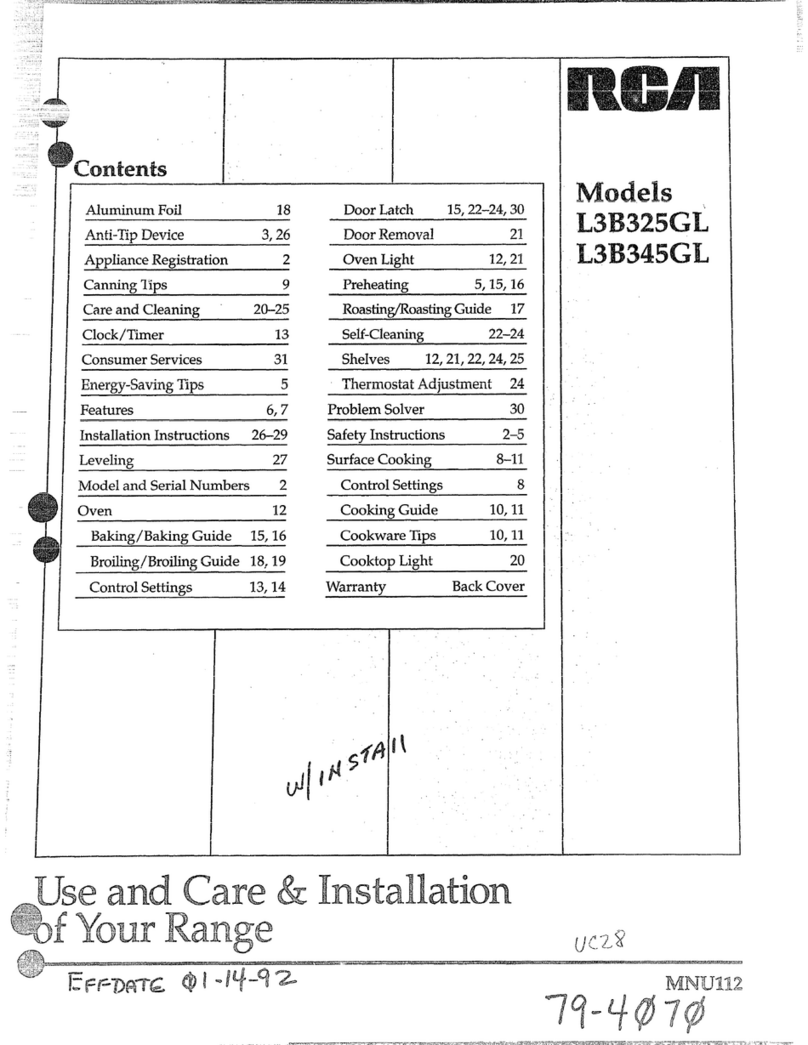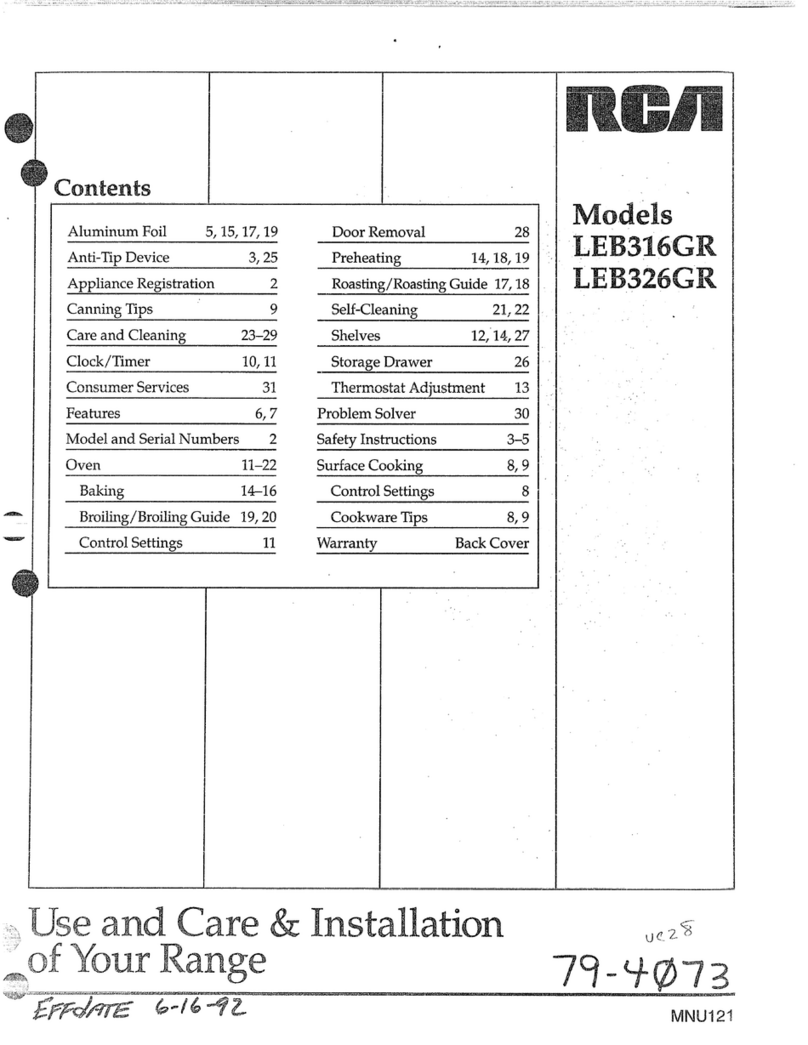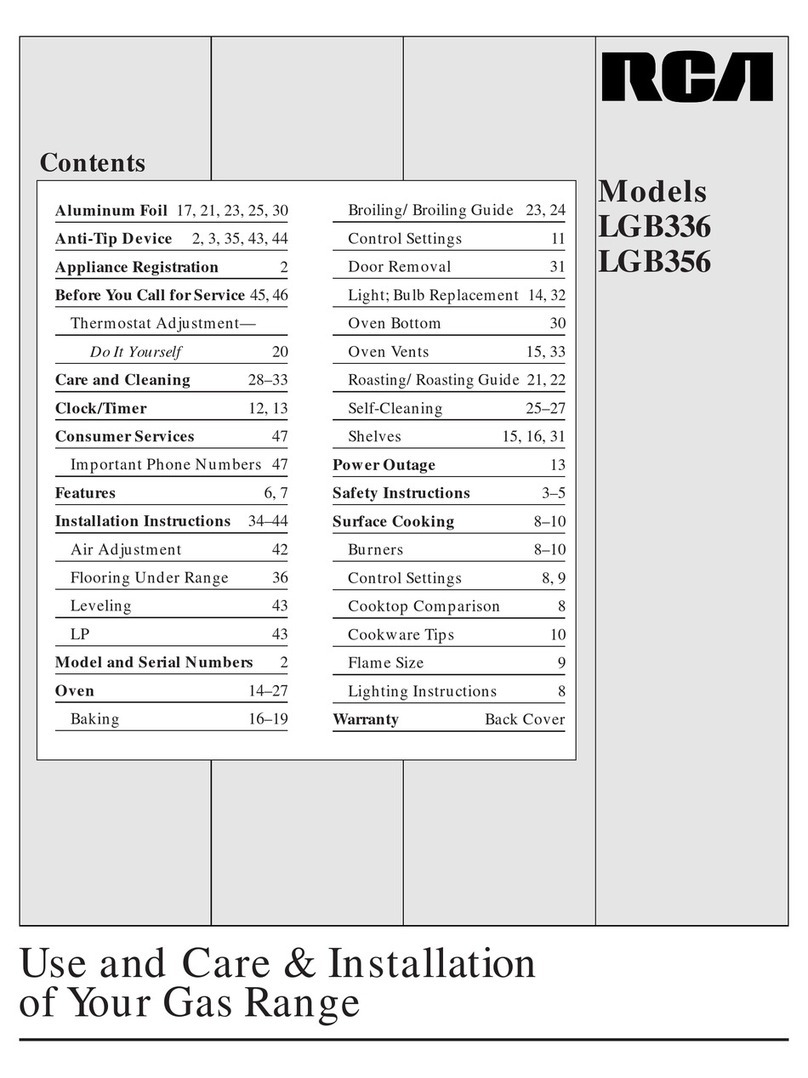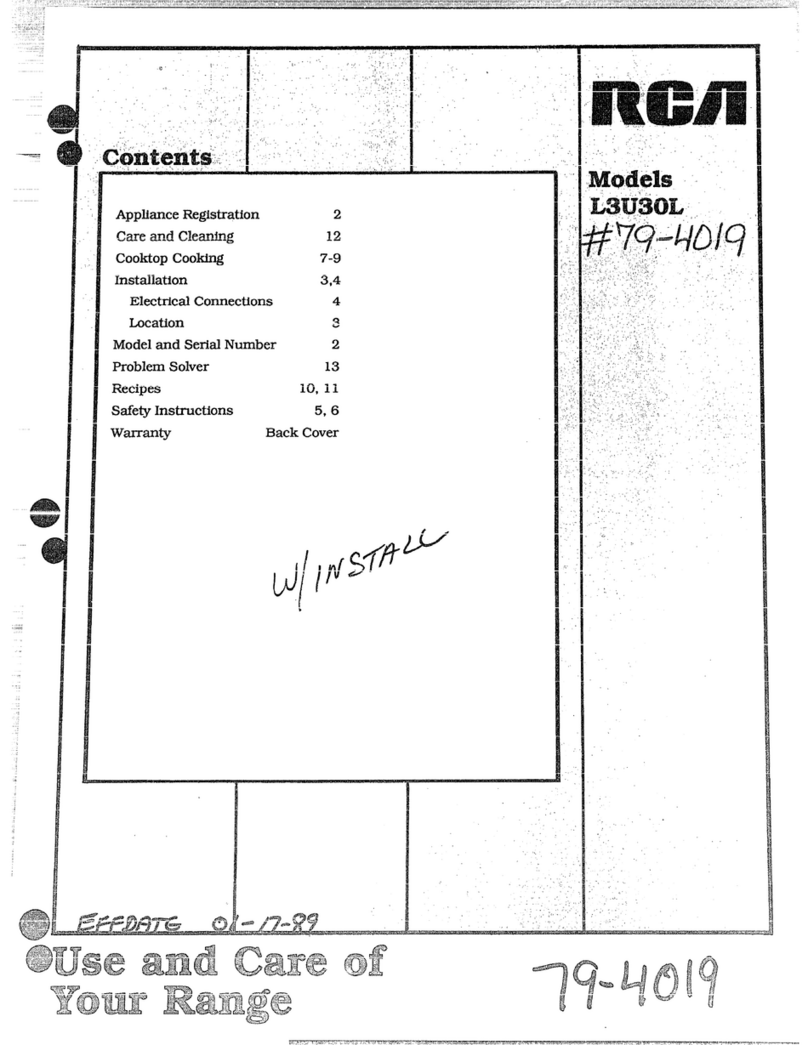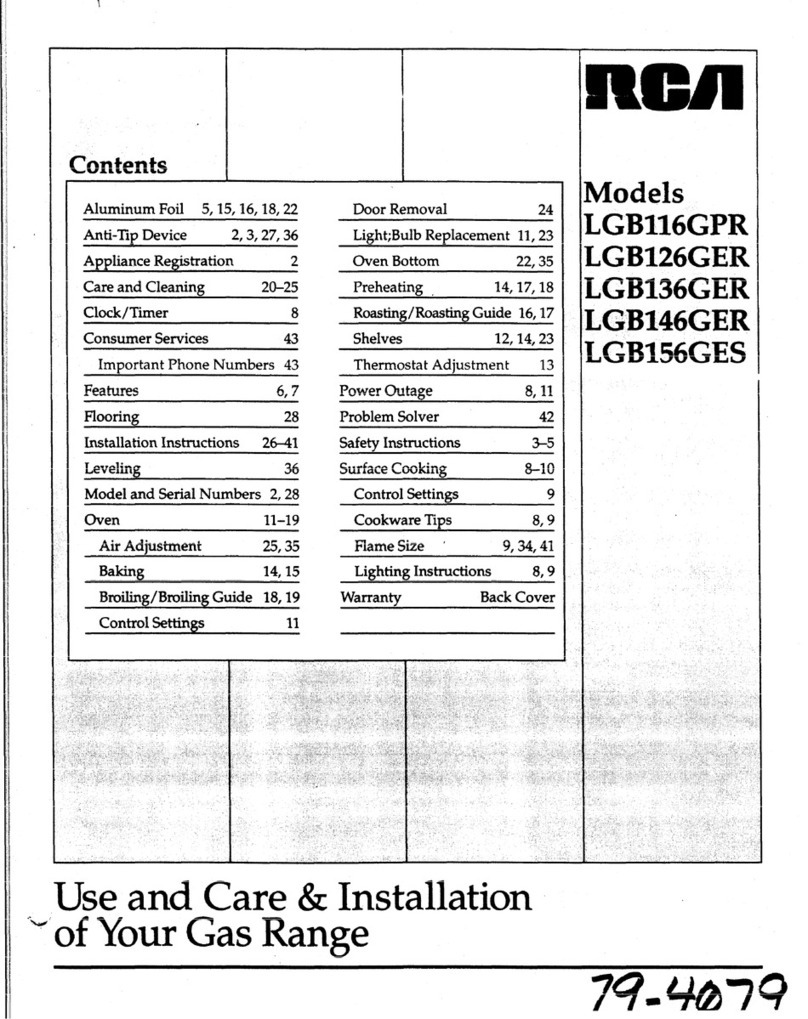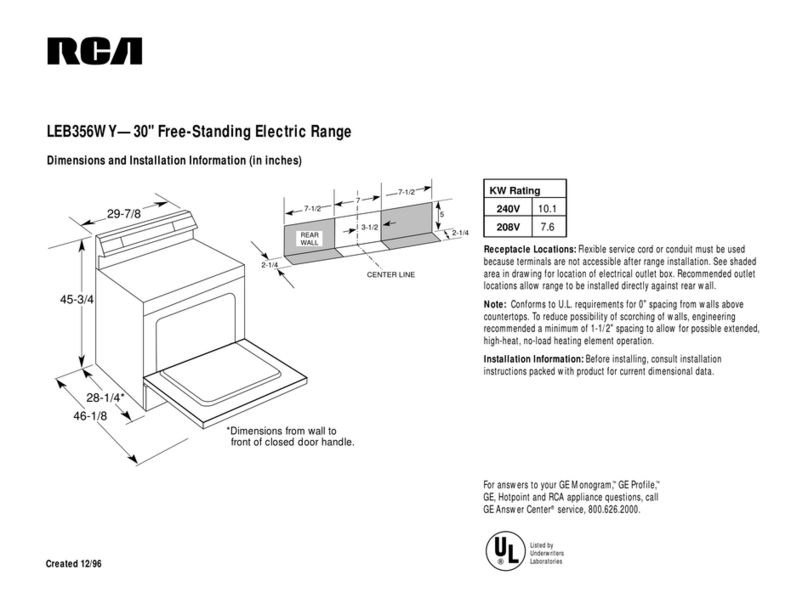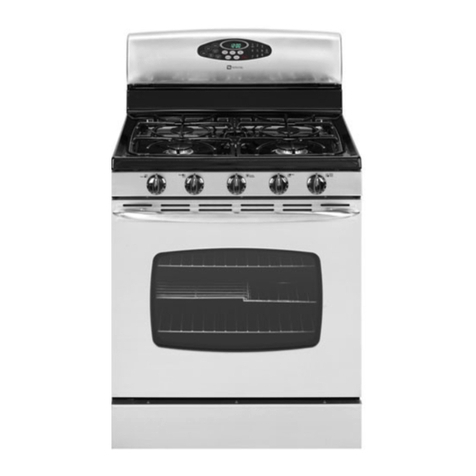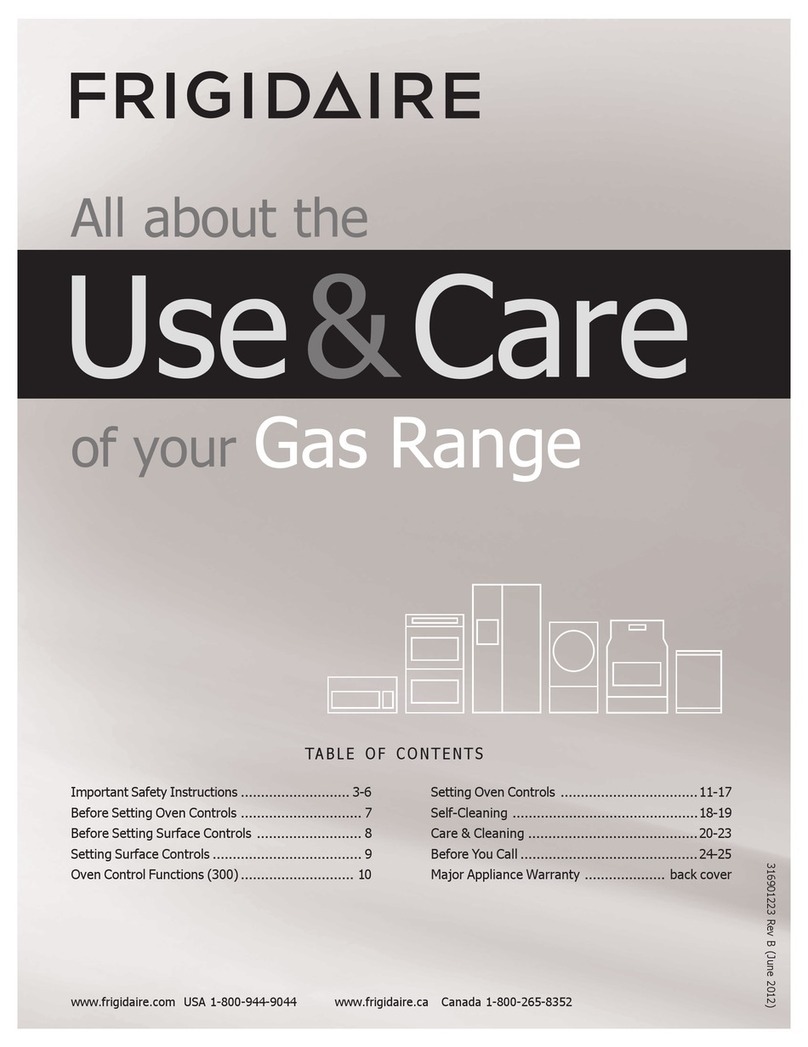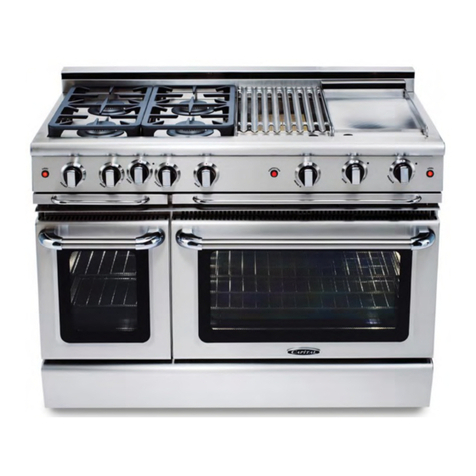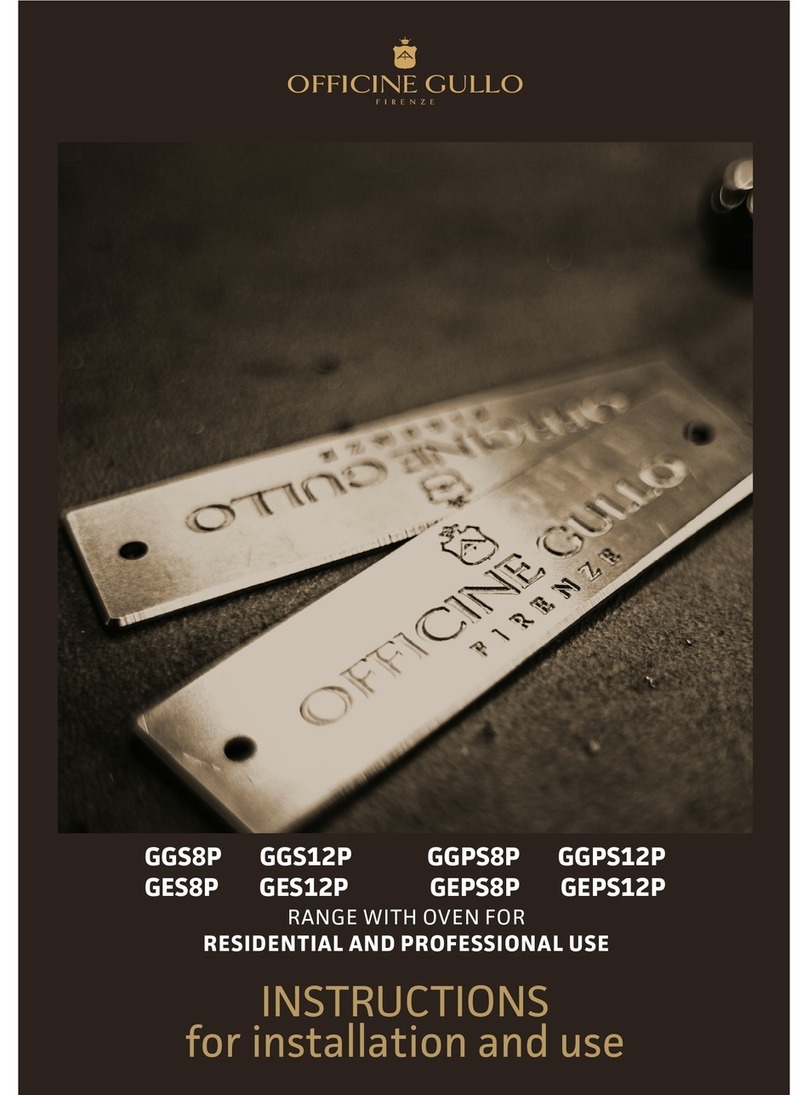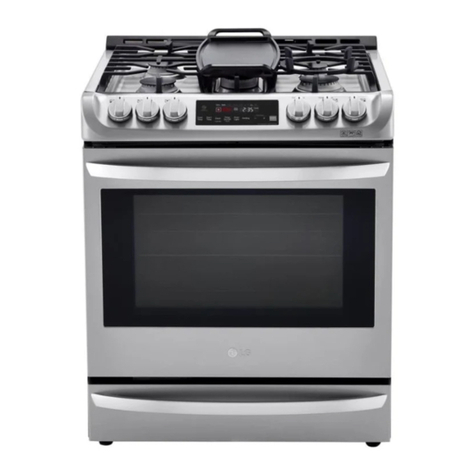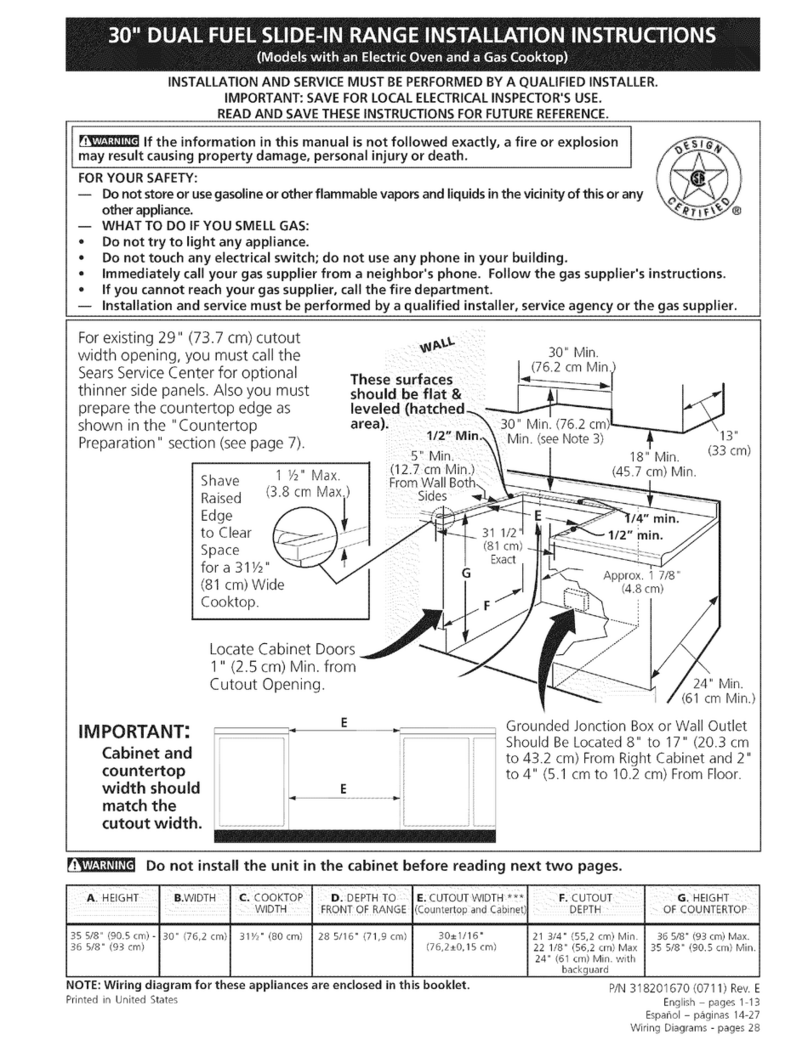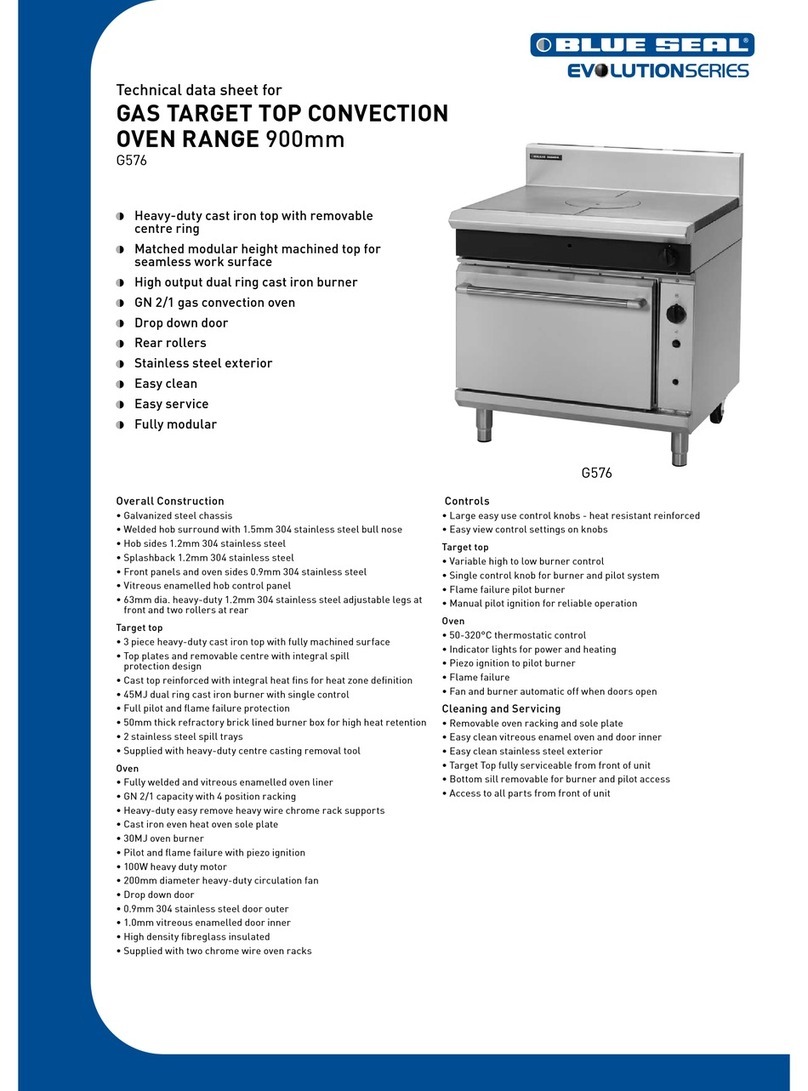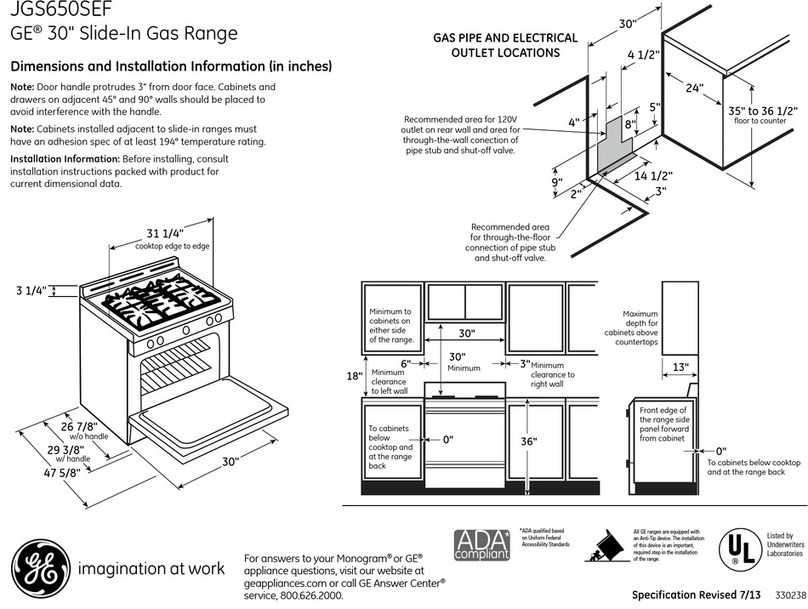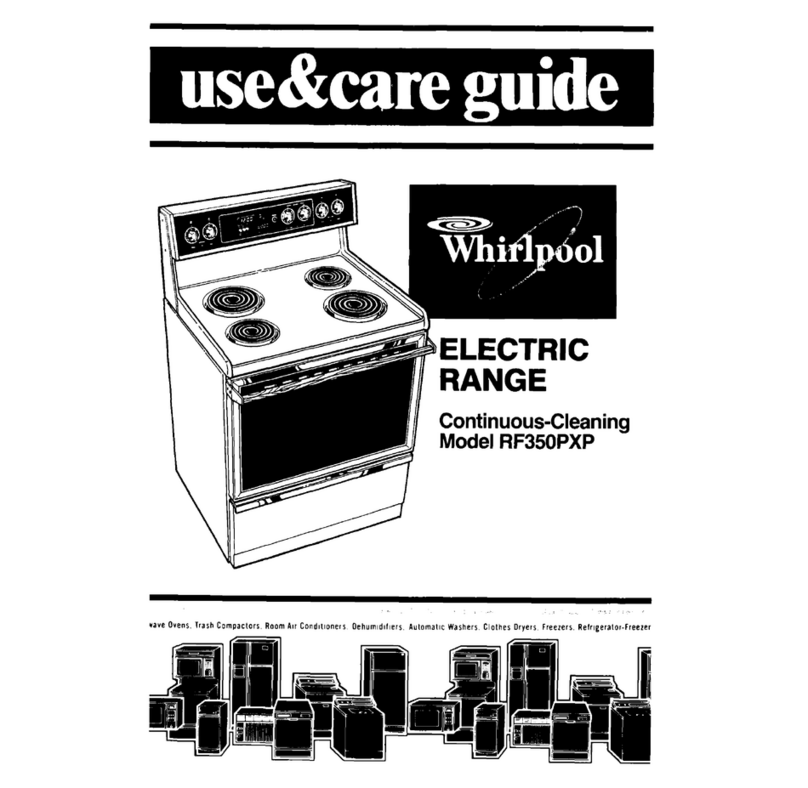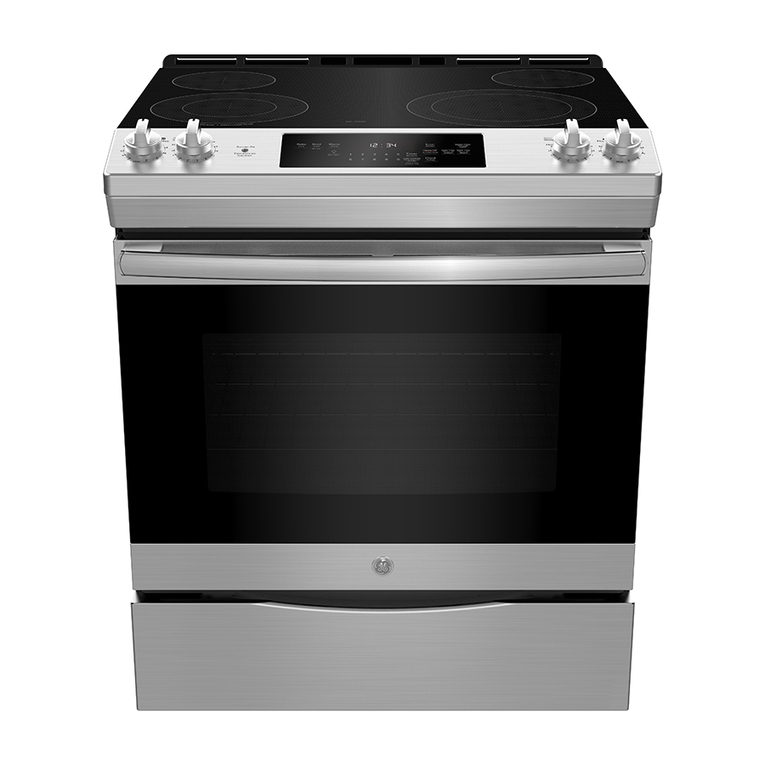.—. .+-
1IMPORTM SAFETY INSTRUCTIONS
(continued)
[
ocAmON: IMS OF INTEREST TO
CHILDREN H(XJLD NOT BE STORED IN
CABINETS OVE AIUWGE OR ON THE
BACKSPLA OF ARANGE-CHILDREN
4
CLIMBING NTHE RANGE TO REACH
ITEMS CO DBE SERIOUSLY INJUREI).
●Do not allow myone to climb, stand or hang on
the door or c@ktop. Theycould damage the range
and even tip it (wer,causing severe personal injury.
d
*Let the burne grates and other surfam cool
before tout “gthem or leaving them where
children can @achthem.
r
●Never wear 10 efitting or hanging garments
while using th appliance. Be careful when
reaching for ite~ stored in cabinets over the
Cooktop.Fl%able material could be ignited if
brought in con ct with flame or hot oven surfaces
and may cause ~everebums.
cDo not use wa~r on grease fires. Never pick up
aflaming pan.;Tum the controls off. Smother a
flaming pan on asurface unit by covering the
pan completely with awell-fitting lid, cookie sheet
or flat tray. Uselamulti-purpose dry chemical or
foam-type fwe~xtinguisher.
Flaming grease ,outsideapan can be put out by
covering it wiLbaking soda or, if available, by
using amulti-p se dry chemical or foam-type
fue extinguisher.
Fiame in the ovpncan be smothered completely by
closing the eve+ door and turning the oven off or
by using amul~-purpose dry chemical or foam-
type f~e exting~isher.
.Donotstore lematerialsintheovenor
●DO NOT STO$E OR USE COMBUSTIBLE
MATERIALS,GASOLINE OR OTHER
A
I?LAMMABL VAPORSAND LIQ~S IN
THE VICINI OF T~ OR ANY OTHER
APPLIANCE.
$
●DO not let coo gg- or other flammable
Xl@erialsace ulate in or near the range.
●When cooking ~rk, follow the directions exactly
and always COOKthe meat to an internal
temperature of tleast 170°F.This assures that, in
lb
the remote poss” ility that trichina maybe present
in the meat, it will be killed md fie meat will be
safe to eat.
4
Surface Cooking
●Alwaysheat fat slowly, and watch as it heats.
●Alwaysuse the LITE position when igniting the
topburnersand make sure the burners have ignited.
●Never leave the surface burners unattended at
highflame settings. Boilovers cause smoking
and greasy spillovers that may catch on fire.
.Adjust the top burner flame size so it does not
extend beyond the edge of the cookware.
Excessive flame is hazardous.
●Useonly dry pot holdem+noist ordamppot holdem
onhot surfacesmay resultin burnsfinm steam.
●Do not let potholders come near open flames
when lifting cookware. Do not use atowel or other
bulkyclothin place of apot holder.
●Tominimim the possibility of burns,ignition
of flammable materials and spillage, turn cookware
handles toward the side or back of the range
without extending over adjacent burners.
●Always turn the surface burnem to off before
removing cookware.
cCarefully watch foods being fried at ahigh
flame setting. @
●Never block the vents (air openings) of the
range.Theyprovide the air inlet and outlet that
arenecessary for the range to operate properly
with correct combustion. Air openings are located
at the rear of the cooktop, at the top and bottom of
the oven door, and at the bottom of the range under
the storage drawer.
●Donot useawokif the wok has around metal
ringthat is placed over the burner grate to
SUppOrtthe wok. Thisring acts as aheat trap,
which may damage the burner grate and burner
head. Also, it may cause the burner to work
improperly. T& may cause acarbon monoxide
level above that allowed by current standards,
resulting in ahealth hazard.
●F* for&yingshouldbeasdry aspossible Frost
on fi-omnf~s or mois~ on fresh foods can cause
hotfat to bubble uP ~d over the sides of the pan.
●UW the kast possible amount offat for effective
ShdJOWor d~p.fat fr~g. Filling the pan too fill
of fat can cau5e Spillovem when food is added.
●Usea deepfat thermometerwhenever possible to
Prevent overheating fat beyond the smoking po~t.
●Never try to move a pan of ~ot fat5especially a
deep fat @cr. Wtit until tie fat is COOL
——


